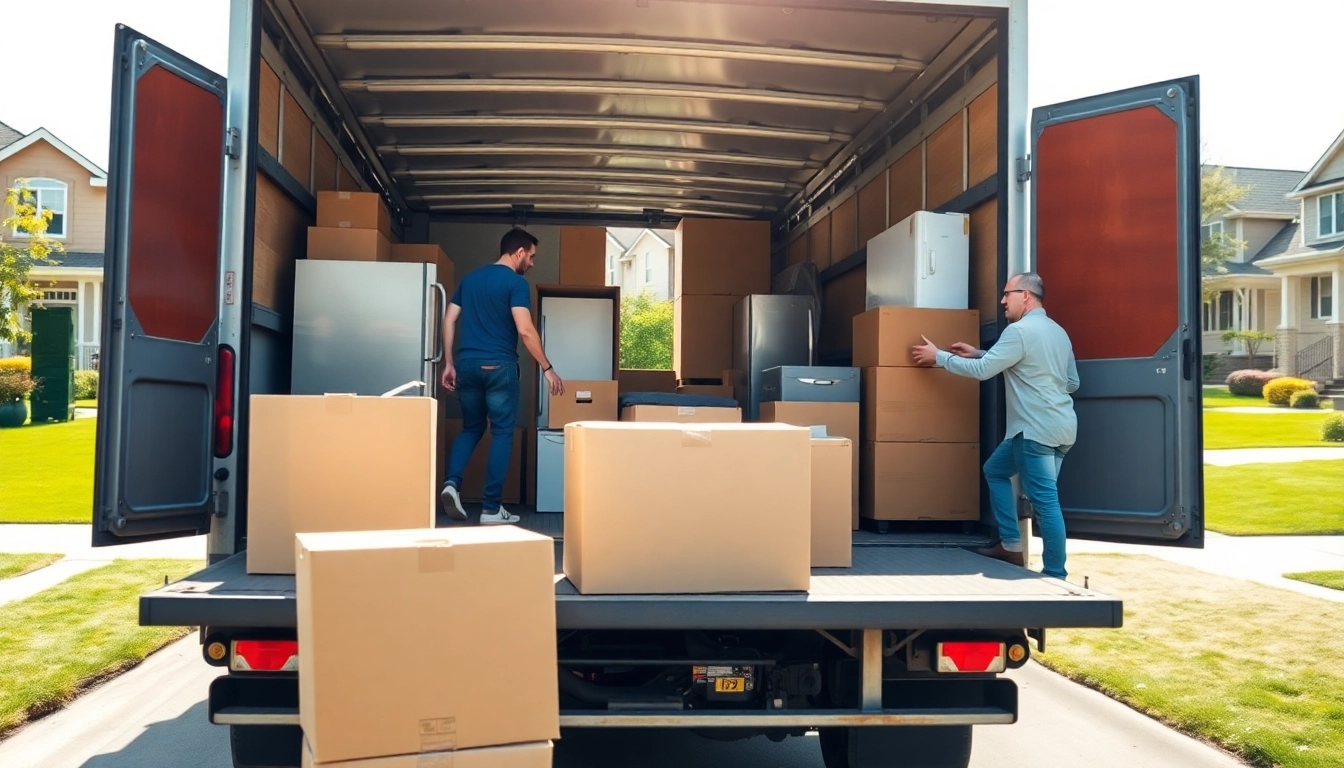Understanding House Moves: The Basics
Moving houses can be one of the most significant transitions in a person’s life. Whether it’s an upgrade, a downsizing, or a relocation for work or family, the process is often filled with excitement and stress. Understanding what house moves entail is essential for ensuring a smooth transition. This guide will help clarify everything you need to know about house moves, from the fundamental definitions to the best practices for making the process efficient and less daunting.
What Are House Moves?
House moves refer to the process of relocating a person’s residence from one home to another. This can include renting, selling, or purchasing property, and often entails packing belongings, coordinating logistics, and transferring services such as utilities and postal addresses. House moves can vary in complexity depending on several factors such as distance, volume of belongings, and the time required for the move.
Key Reasons for Moving Houses
There are numerous motivations for relocating. Some of the most common reasons include:
- Job Relocation: Many individuals and families move for career opportunities, whether it’s accepting a new position in a different city or transferring within the same company.
- Family Dynamics: Changes in family size, such as marriage, divorce, or the birth of children, often necessitate a move to accommodate new lifestyles.
- Financial Considerations: Some people may choose to move to reduce living costs, whether that means downsizing to a more affordable home or relocating to a different area with lower property prices or taxes.
- Desire for a Better Quality of Life: Moving for a more desirable climate, better schools, safe neighborhoods, and recreational opportunities is also quite common.
- Upgrades or Amenities: Many individuals seek out homes with better features—like more bedrooms, modern amenities, or outdoor space.
Typical Costs Associated with House Moves
The costs involved in a house move can add up quickly. It is vital to budget accordingly. Here are typical expenses to anticipate:
- Moving Company Fees: If you choose to hire professional movers, their rates will be a significant portion of your budget. Rates can vary based on distance, size, and additional services.
- Packing Supplies: Boxes, tape, bubble wrap, and other materials are essential for protecting your belongings during the move.
- Insurance: Obtaining moving insurance may add to your costs but can save you money if your items are damaged during the move.
- Transportation Fees: Before, during, and after the move, expect to spend on fuel if you’re using a self-driving vehicle.
- Utility Setup: Connecting water, electricity, internet, and cable in a new home often incurs initial setup fees.
- Real Estate Costs: Selling and buying homes can have associated costs, including real estate agent fees, closing costs, and repair expenses.
Planning Your House Move
Proper planning is crucial for mitigating the stress associated with house moves. Let’s dig deeper into how you can successfully plan your relocation.
Creating a Moving Checklist
Establishing a comprehensive moving checklist can help you stay organized throughout the process. Below are key components to consider:
- Set a Timeline: Decide when you want to move and work backward to create benchmarks for your progress.
- Declutter: Go through your belongings and determine what you want to keep, donate, or discard. This will simplify packing and reduce moving costs.
- Research Moving Companies: Look for reviews and ratings to find credible movers that fit your needs and budget.
- Schedule Utility Services: Plan when to disconnect utilities at your old place and connect them at the new one, ensuring a seamless transition.
- Prepare an Essentials Box: Pack a box with items you’ll need immediately upon arrival, such as toiletries, medications, and a change of clothes.
How to Choose the Right Moving Company
Selecting a moving company can significantly affect the quality and stress level of your move. Here’s what to consider:
- Credentials: Ensure the company is licensed and insured, providing protection should something go wrong during the move.
- Experience: Opt for companies with a positive reputation and extensive experience in handling moves like yours.
- Services Offered: Compare the range of services provided such as packing, storage, and special handling like heavy or fragile items.
- Cost Estimates: Request in-home estimates so you can gauge pricing based on your specific requirements rather than getting a generic quote.
- Customer Reviews: Review ratings and testimonials on independent sites to understand past customers’ experiences.
Important Things to Do Before Moving Day
As the moving day approaches, there are several critical tasks to complete:
- Confirm Details with Movers: Ensure dates, times, and exact costs have been confirmed to avoid confusion.
- Notify Your Current Landlord/Property Manager: If applicable, provide proper notice as per your lease agreement.
- Label Boxes: Clearly mark boxes by room and content for efficient unpacking at the new location.
- Take Measurements: If possible, measure large furniture against the new home’s doorways and rooms to avoid complications.
- Make Travel Arrangements: If you’re moving out of town, book accommodations and plan your route ahead of time.
Executing a Successful House Move
With thorough preparations completed, it’s time to put your plan into action. The execution of your move is crucial to its success.
Strategies for Packing Efficiently
Packing effectively is vital to prevent damage and facilitate a quicker unpacking process. Here are some strategies:
- Start Early: Don’t wait until the last minute. Start packing non-essential items weeks in advance.
- Use Uniform Boxes: Utilize boxes of similar size for stacking ease and stability.
- Wrap Fragile Items Carefully: Use bubble wrap or towels to protect fragile items, and place heavier items at the bottom of boxes.
- Pack Room by Room: Concentrating on one area at a time alleviates confusion and keeps similar items grouped together.
- Utilize Space: Fill suitcases, baskets, and storage bins with clothes or small items to maximize your packing efforts.
Tips for Loading and Unloading the Moving Truck
Proper loading and unloading techniques can make the process smoother and safer:
- Load Heavy Items First: This provides a stable base and lessens the shifting of lighter items during transportation.
- Use Blankets for Protection: Place moving blankets between items for added protection against scratches and damage.
- Balance the Load: Make sure the truck is evenly loaded to prevent tipping during transit.
- Unload Strategically: On arrival, unload in the reverse order of loading—start with essentials to settle in quickly.
- Have a clear unloading plan: Mark where furniture will go in your new home to expedite the process.
Common Mistakes to Avoid During a Move
Many individuals make similar mistakes during house moves. Here’s how to avoid them:
- Failing to Budget: Underestimating the costs leads to financial strain. Create a detailed budget and account for unexpected expenses.
- Not Measuring Doorways: Large furniture may not fit through doors. Measure before the move.
- Ignoring Insurance: Don’t neglect to insure your possessions. Protect your valuables in case they are damaged.
- Procrastination: Putting off packing or planning can lead to chaos. Stick to your checklist to stay on schedule.
- Not Taking Breaks: Remember to take breaks during packing and loading to maintain energy and morale.
Post-Move Considerations
Once you’ve successfully moved into your new home, there are essential considerations to ensure a seamless transition.
Settling In: Making Your New House a Home
Unpacking and settling in can take time, but prioritizing can help ease the transition:
- Declutter as You Unpack: Evaluate what you truly need and discard or donate any items that no longer serve you.
- Set Up Key Rooms First: Focus on establishing primary areas like the kitchen and bedrooms to create a functional living space.
- Personalize Your Space: Arranging furniture and decor in a way that feels comfortable can transform your house to feel more like home.
- Connect with Neighbors: Engage with your community and introduce yourself to build a network. This can help you feel more connected.
Updating Your Address: A Comprehensive Guide
Changing your address is a critical step that should not be overlooked. Follow these steps to ensure you stay connected:
- Notify the Post Office: Submit a change of address form to redirect your mail.
- Update Accounts and Services: Inform banks, employers, and subscription services of your new address.
- Contact Local Government: Ensure voter registration and vehicle registration are updated with your new address.
- Set Reminders: Create a list of organizations to notify, so you don’t overlook any critical updates.
Importance of Home Insurance Post-Move
Home insurance is essential to protect your investment. Consider these aspects:
- Review Your Coverage: After a move, assess your home insurance policy to ensure it reflects the value of your new property.
- Understand Your Policy: Familiarize yourself with what is covered and any exclusions or limits.
- Choose a Reputable Provider: Research and select an insurance provider known for reliability and customer service.
- Consider Additional Protection: Seek additional coverage for valuable items or potential risks unique to your area.
Best Practices for Future House Moves
Learning from your last move will help you prepare for future relocations. Here are some best practices for easier moves ahead:
How to Maintain an Organized Home Between Moves
An organized home reduces stress when preparing for your next move. Here’s how to maintain organization:
- Regular Decluttering: Set aside time periodically to go through belongings and part with anything unnecessary.
- Efficient Storage Solutions: Invest in storage bins and shelving units to keep items orderly and accessible.
- Create a Home Inventory: Document your belongings, noting their condition, which can assist in claims if items are lost or damaged.
- Stay Minimalist: Adopt a minimalist mindset to limit your possessions, making future moves easier.
Tips for Downsizing or Upgrading Your Living Space
Whether you’re scaling back or moving to a larger space, follow these tips:
- Assess Needs: Understand what is vital for your lifestyle. Evaluate if you need all the space you currently have.
- Research Neighborhoods: Consider amenities, schools, and safety when looking for a larger or smaller home.
- Start Early: As with any move, begin preparations early, especially when downsizing, to avoid last-minute decisions.
- Consult a Real Estate Agent: For upsizing, seek help from an experienced agent familiar with the market.
Leveraging Technology for Future Moves
Technology can simplify and enhance your moving experience:
- Virtual Tours: Utilize online resources and virtual tours for viewing potential homes remotely.
- Moving Apps: Use apps specifically designed for managing moves to keep track of inventory and timelines.
- Online Marketplaces: If selling items before moving, use websites and apps to list unwanted items for sale easily.
- Social Media: Engage with community groups for recommendations on moving services or local resources.



